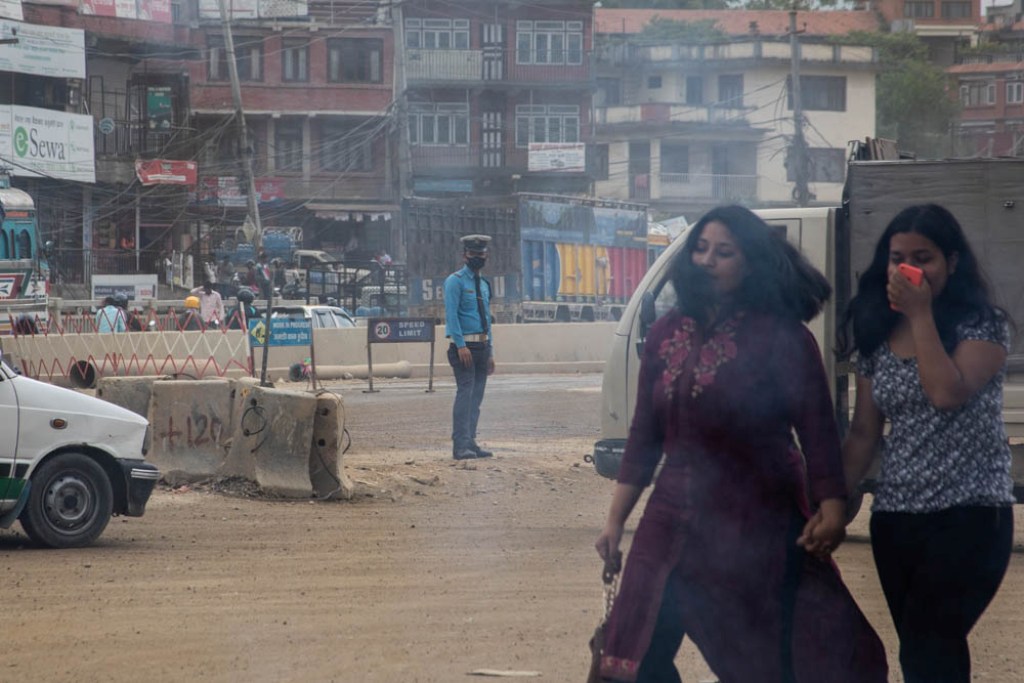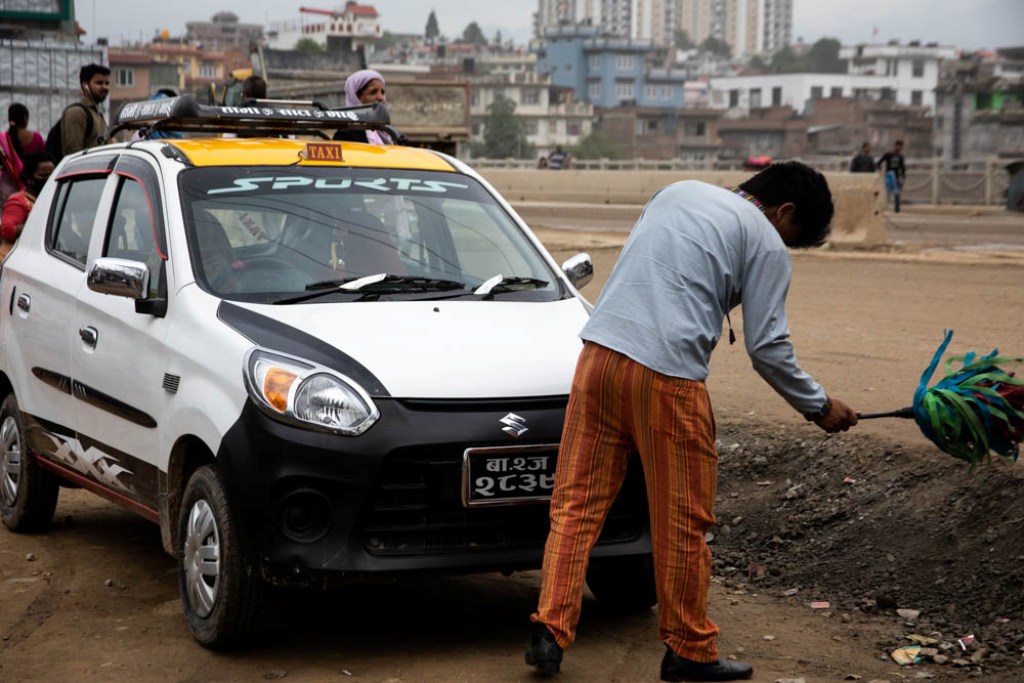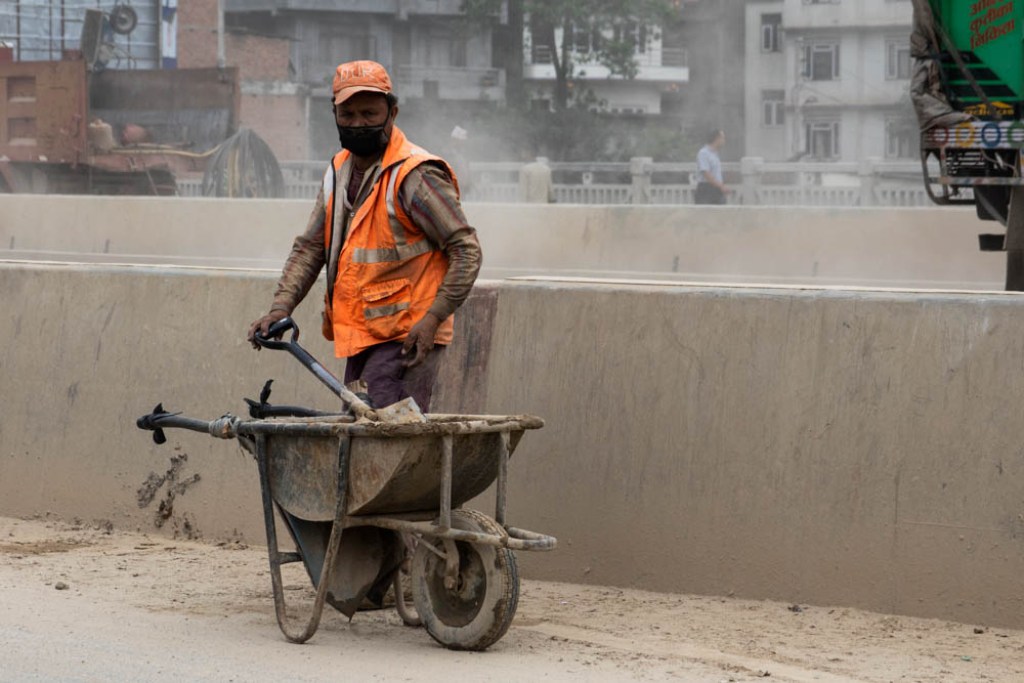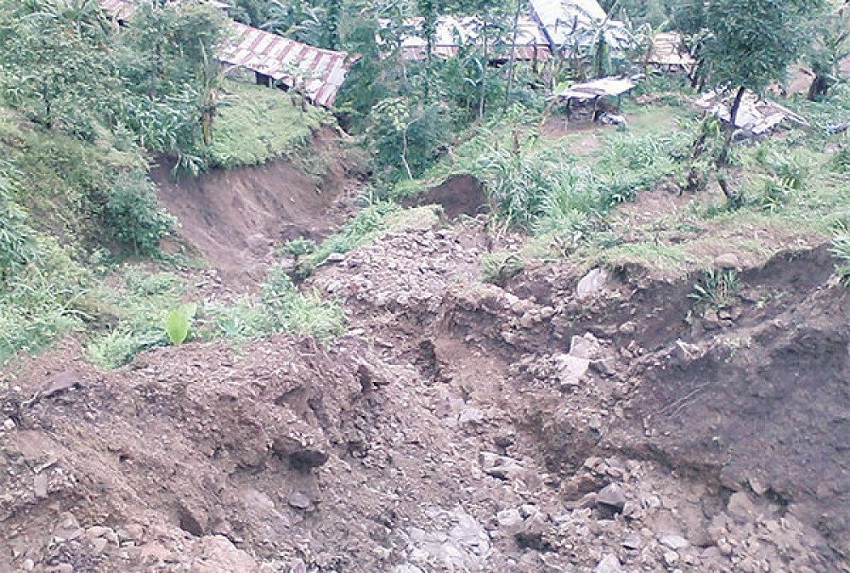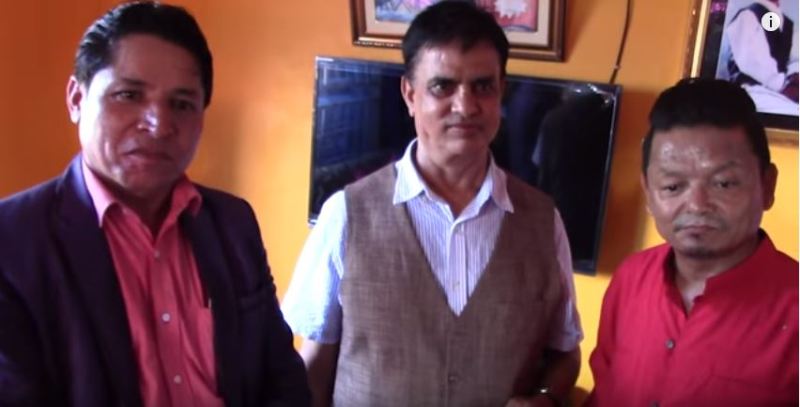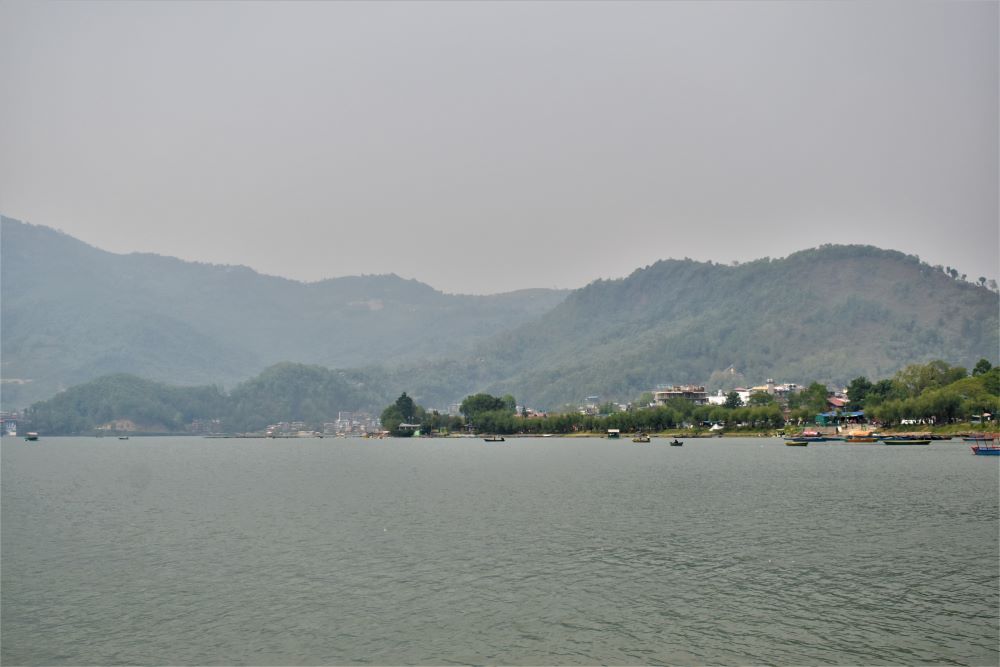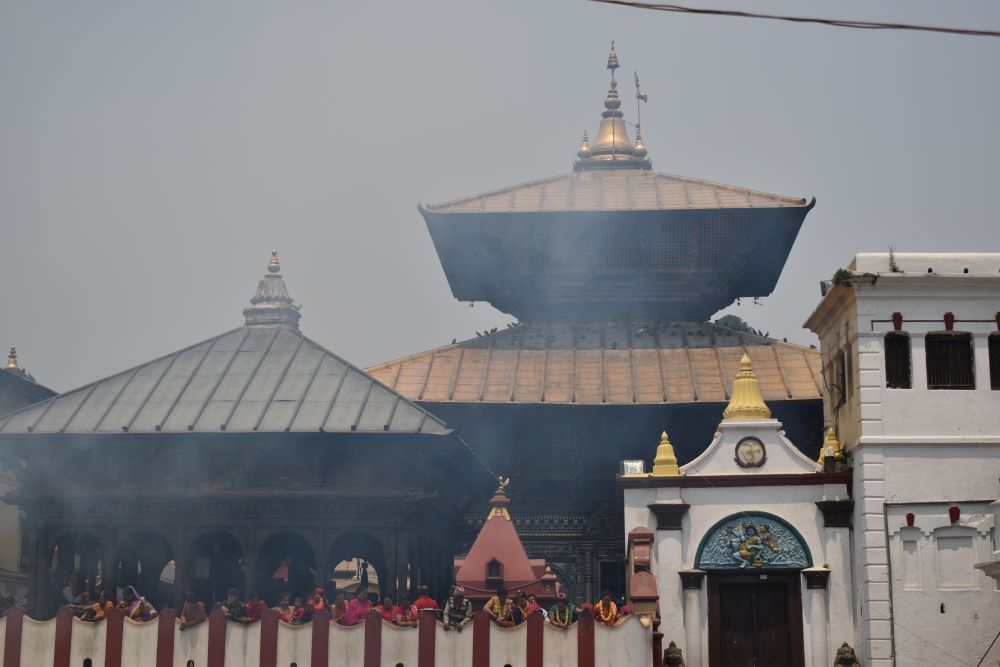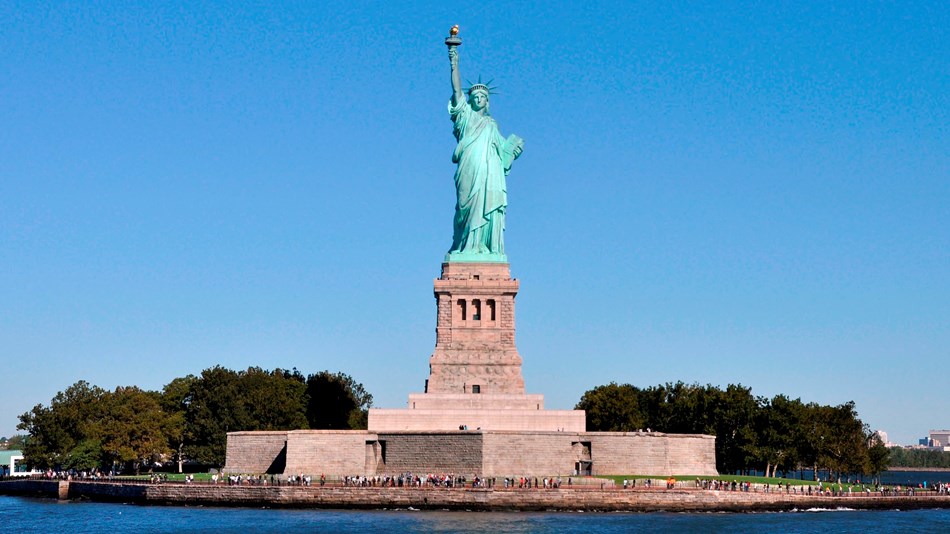“Dust-mandu”
AajakoKhabar | Published on Tuesday July 31, 2018
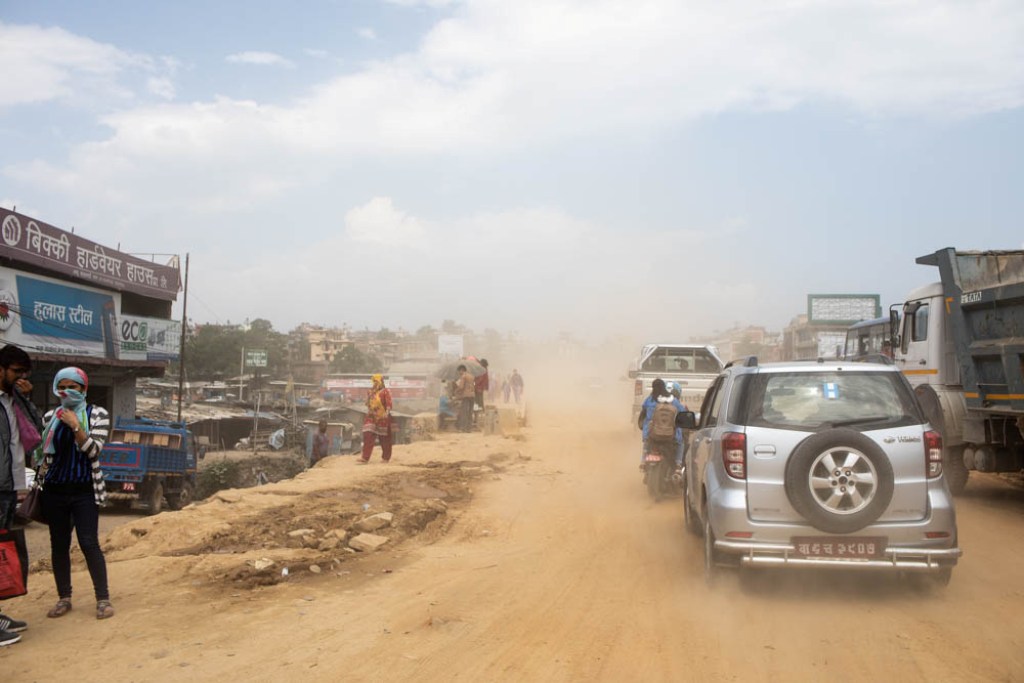
The dust pollution in Kathmandu may not be new, but with the eight lane expansion of Ring Road and new pipelines for the drinking water project, there are parts of the city that it’s Impossible to see the road ahead.
For the first time in 50 years the government is replacing water pipes for the project, but while an increase in water supply may be crucial it comes at a cost.
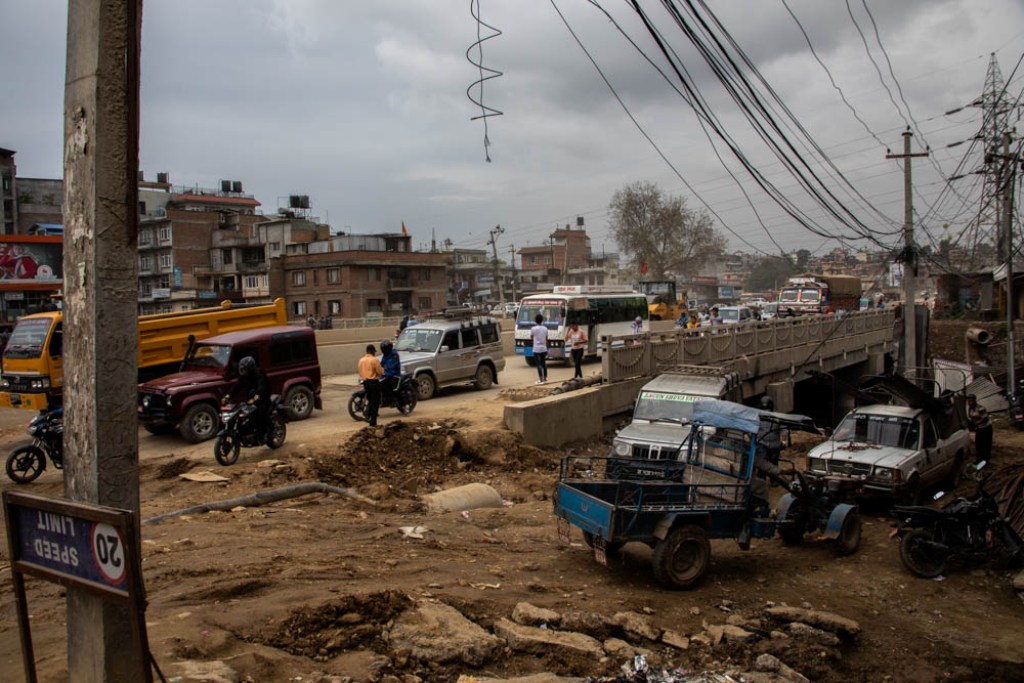
Riding on the back of a motorbike with dust finding its way into every part of my face I could not believe locals endure this pollution every day. Not only was it hard for me to breathe on the street, but I would layers of dirt caked on my face when I arrived at home. Wearing a face mask was not enough to protect my nose from black dust and I’ve only been visiting so I image the long term effects.
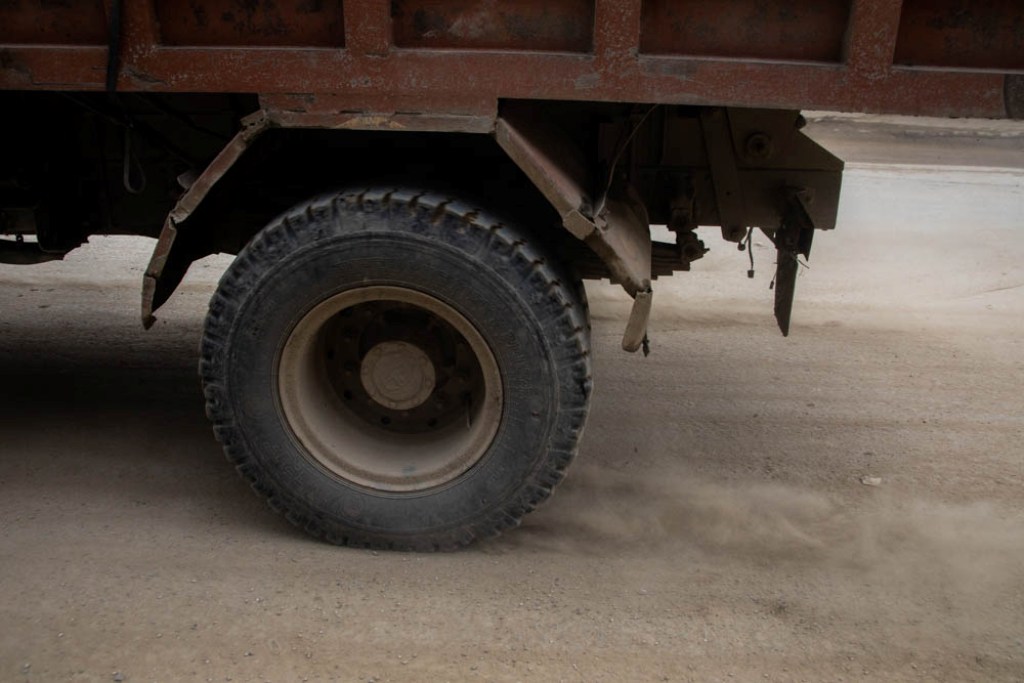
The people squint in order to cross the street and the animals wheeze. According to the air quality index, the majority of Kathmandu stays in the unhealthy air quality zone.
“What happens is in the valley warm air goes up and cool air drops down to create a bowl effect of warm air that doesn’t help the air current circle around,” Dr. Indubra Sad Dungel, optometrist in Nepal Eye Hospital in Tripureshwor, said.
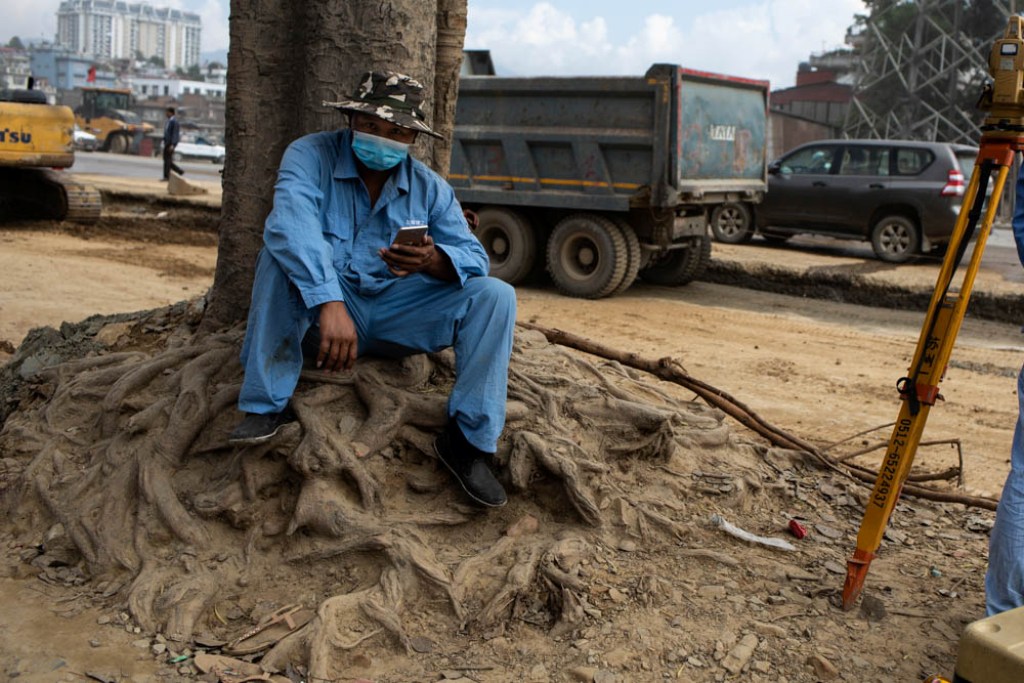
Not only does the government construction pollute streets, but also the issue of brick factories and fuel pollutants harm clean air. More than 25 migrants of dust particles in a cubic meter becomes a health hazard.
Dungel said, “Surface air in Kathmandu is very notorious for vehicle emission, brick factories, and fuel as the source of air contaminants.”
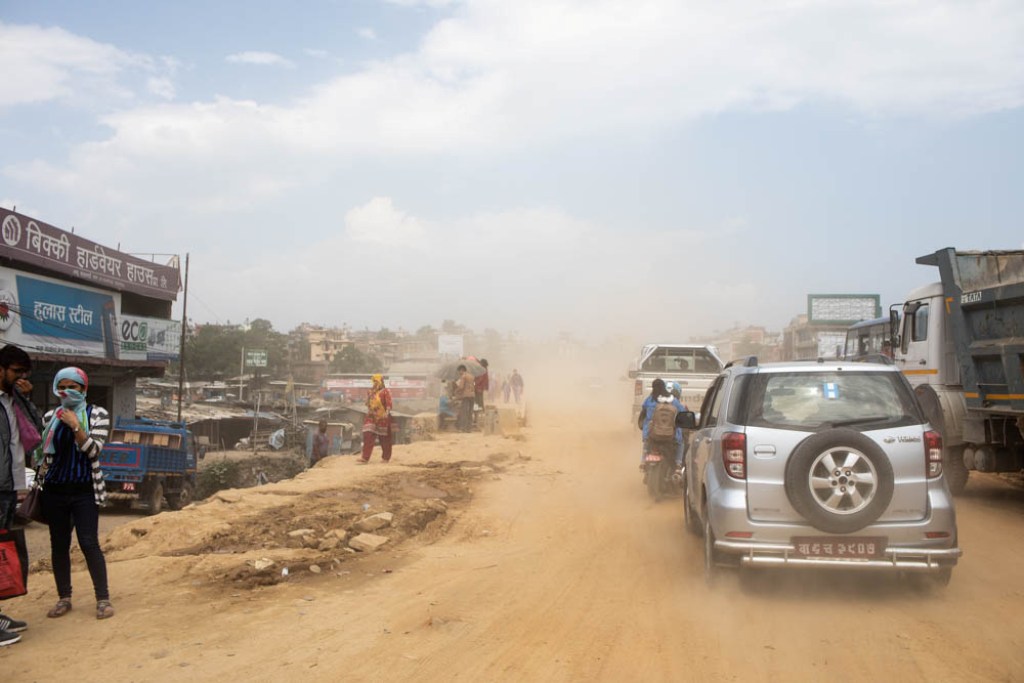
While Dungel advised avoiding dusty areas, avoidance proves impossible for most of the city population commuting to and from work, school or other life activities.
Radhika Thapa, a second year at Viswa Deep Multiple Campus said, “I’m daily going to college and home with my eyes itching and hair dirty which is very quickly irritating and difficult for breathing.”
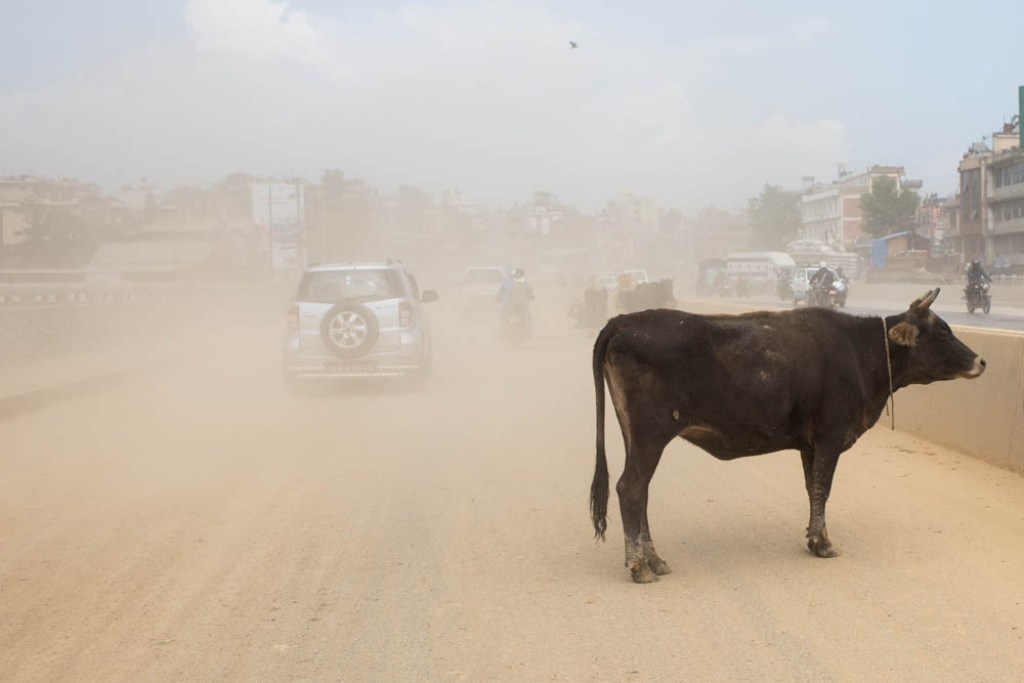
Thapa sits by the dusty road at the bus stop with no choice, but to breathe in road contaminates. I’ve noticed most people that are able to afford private transportation own motorbikes which only accumulates the effects of the dust.
There are no traffic lights, speed limits or much regulation of traffic at all in Kathmandu. Often traffic officers will sit in the middle of traffic circles to direct the vehicles throughout the day.
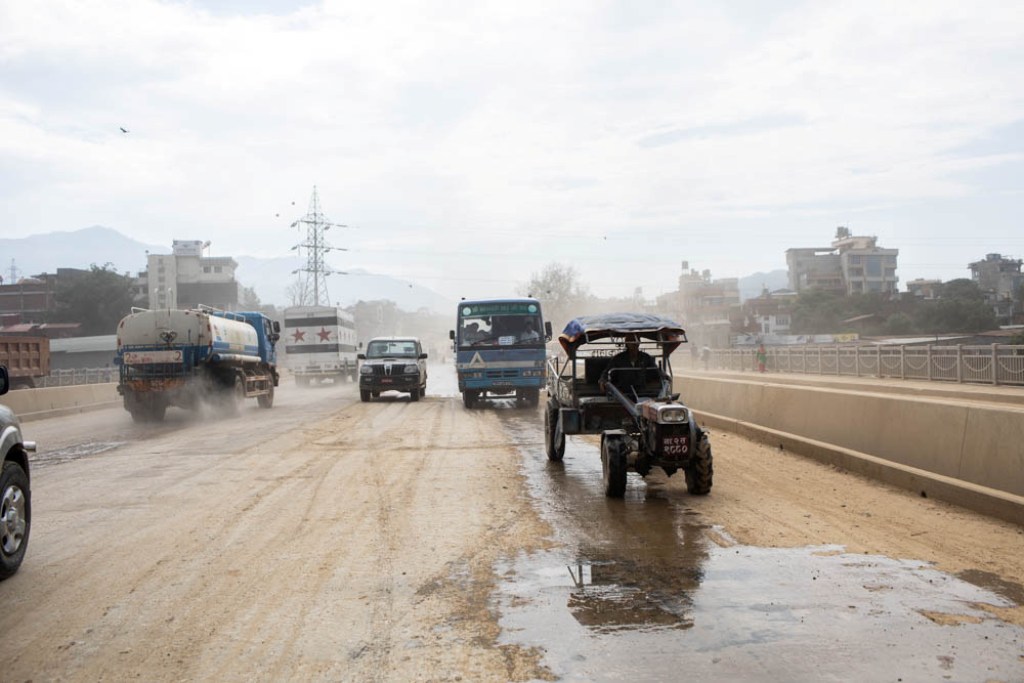
The officers only protection from fumes and dust being a small mask around their mouth and nose. Saru Pancha, traffic officer, refers to the city as Dust-mandu because of the regular issues of pollution harming her eyes and clothes while she stands in the middle of the road.
“If I do not maintain dietary and exercise I will be sick,” said Pancha. “If I don’t have regular check up every three month, I will become sick a lot of the time.”
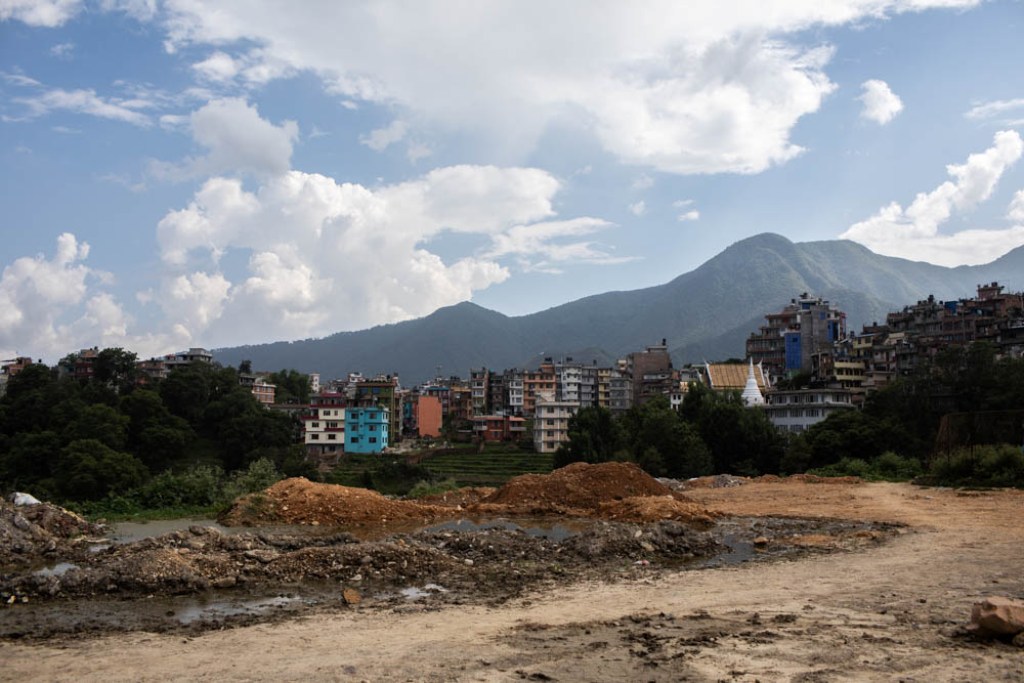
Not only does the dust impact the people and animals, but shop owners are constantly sweeping their shops without progress. The dust harms their trade and their vehicles ability to run properly.
From one week in the city my camera lens stopped working from shooting in the dust pollution that creeped inside it’s mechanics.
“The basic problem in Kathmandu is air pollution affect human health by affecting eyes and hearing and reason and lungs and your heart,” Dungel said. “The pollution causes watery eyes, red eyes, foreign body sensation and itchy eyes.”
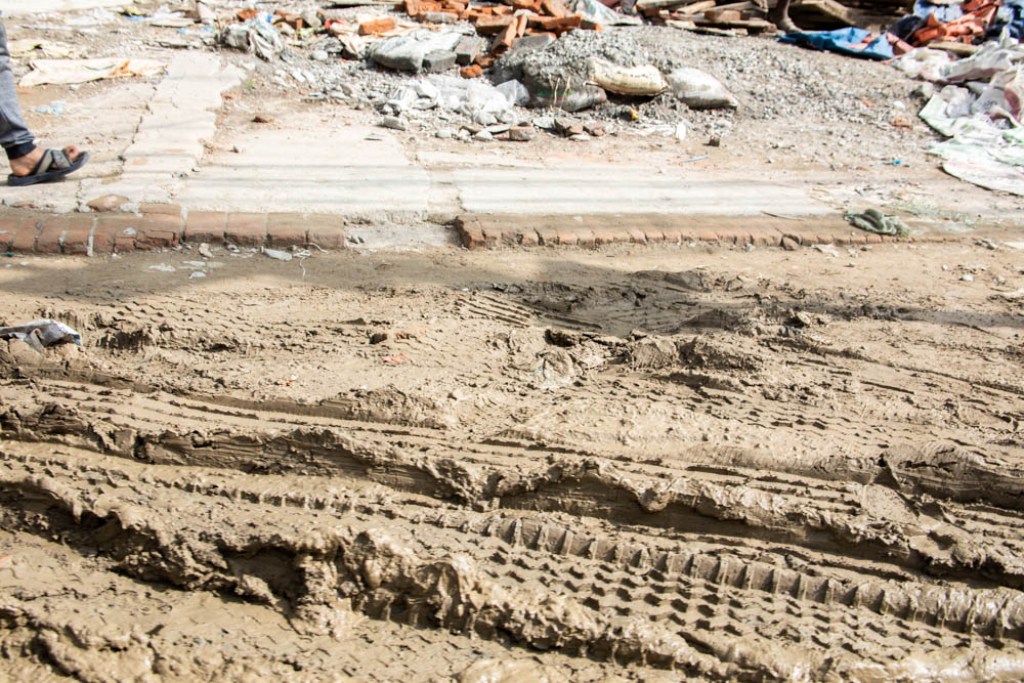
Dungel advised people not to rub their eyes for it may possibly affect the membrane of the cornea. He said to check up at local optometrist for eye examination if there were any possible problems arose.
My mask still finds dust on the white interior when I walk around and I hope in the future there will be more sustainable ways to decrease air pollution in Kathmandu for the safety of the people in this region.
